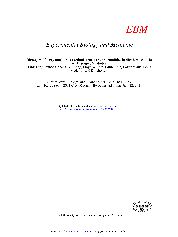摘要
Hyperglycemia-linked oxidative stress and/or consequent endoplasmic reticulum (ER) stress are the causative factors of pathogenesis of diabetic retinopathy. Dietary bioactive components which mitigate oxidative stress may serve as potential chemopreventive agents to prevent or slow down the disease progression. Wolfberry is a traditional Asian fruit consumed for years to prevent aging eye diseases in Asian countries. Here we report that dietary wolfberry ameliorated mouse retinal abnormality at the early stage of type 2 diabetes in db/db mice. Male mice at six weeks of age were fed the control diet with or without 1% (kcal) wolfberry for eight weeks. Dietary wolfberry restored the thickness of the whole retina, in particular the inner nuclear layer and photoreceptor layer, and the integrity of the retinal pigment epithelia (RPE), and the ganglion cell number in db/db mice. Western blotting of whole retinal cell lysates revealed that addition of wolfberry lowered expression of ER stress biomarkers binding immunoglobulin protein (BiP), protein kinase RNA-like ER kinase (PERK), activating transcription factor 6 (ATF6) and caspase-12, and restored AMP-activated protein kinase (AMPK), thioredoxin, Mn superoxide dismutase (Mn SOD) and forkhead 0 transcription factor 3 alpha (FOXO3 alpha) activities. To determine if our observations were due to the high contents of zeaxanthin and lutein in wolfberry, additional studies using these carotenoids were conducted. Using the human adult diploid APE cell line ARPE-19, we demonstrated that both zeaxanthin and lutein could mimic the wolfberry preventive effect on activation of AMPK, thioredoxin, Mn SOD, FOXO3 alpha activities, normalize cellular reactive oxygen species and attenuate ER stress in ARPE-19 cells exposed to a high glucose challenge. The zeaxanthin preventive effect was abolished by small interfering RNA knockdown of AMPK alpha. These results suggested that AMPK activation appeared to play a key role in upregulated expression of thioredoxin and Mn SOD, and mitigation of cellular oxidative stress and/or ER stress by wolfberry and zeaxanthin and/or lutein. Taken together, dietary wolfberry on retinal protection in diabetic mice is, at least partially, due to zeaxanthin and/or lutein.
- 出版日期2011-9
